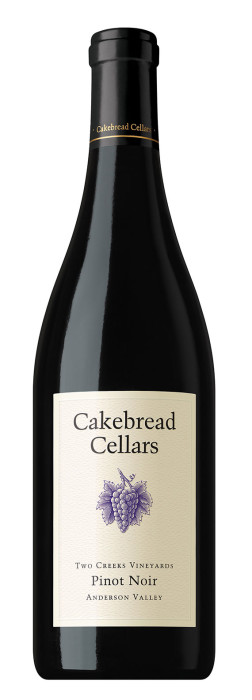Our Thanksgiving table has an iconic image: turkey, stuffing, mashed potatoes, gravy, pumpkin pie, and maybe something less recognized, wine. I personally cannot remember a Thanksgiving feast without those components, but for most Americans, wine on the Thanksgiving table — on tables period — is actually a relatively new addition.
A holiday table in the 1950’s may very well not have had wine at all. Visit a typical restaurant in the 1950’s, and you might have found a handful of European wines, but often no American bottles.
With what can be considered the United States’ most culinary-centric holiday, let’s take a look at two different themes that are relevant to this staple meal: what is the pattern of wine consumption in the U.S., and what will Americans be drinking this Thanksgiving in 2015.
If wine was often absent on our tables in the 1950’s, what happened? Didn’t we have wine starting with Thomas Jefferson? Remember that quote from Benjamin Franklin:
The discovery of wine is of greater moment than the discovery of a constellation. The universe is too full of stars.
American winemaking began in this country in 1562 with some French Huguenots in Jacksonville, Florida using a native grape called Scuppernong. But the first commercially successful winery did not open until 1830 in Cincinnati, and the first California winery opened only in 1861 under the leadership of Charles Krug.
In the 19th and early 20th century, Americans drank beer and spirits, but not much wine. Just before World War 1, Americans drank 40 times more beer than wine, 3 times as much spirits as wine. Most Americans in that period lived on the family farm and that farm grew wheat, corn, and cows. There were few family vineyards. The average American drank three bottles of wine a year.
Still in 1919, there were about 2,500 local wineries in the United States. Then came the Triple Whammy that hammered the wine industry: Prohibition, the Great Depression, and World War 2. The 2,500 American wineries dwindled to less than 100. For thirty years, American wine was in the Dark Ages.
Restoration was very slow. The California Wine Advisory Board began a marketing and advertising campaign starting in 1938. In 1940 the now world-famous UC Davis wine program took first steps. Still, progress was slow and even in the 1950s and 1960s we were a beer and spirits nation. There were just 360 wineries in 1955 California, two decades after prohibition ended. Today, there are over 3,400.
And then there was a California milestone, a true seismic jolt that actually occurred in Paris. In blind tastings in 1976, California reds and whites won major contests against French wines. The world took note and Americans reacted with pride. American university wine programs began the fertilization of technology and techniques. Orchards and berry fields in Oregon and Washington were converted to vineyards. Now every state in the union offers a selection of wines.
That 1976 event just happened to coincide with the Baby Boomers having entered drinking age. There has been, ever since, a contest between quantity and quality. Wines of the 1970s and 1980s were not always carefully developed. But over time, under the influence of consumer pressure and the development of a true wine industry, wine quality has appreciably improved. Wineries have learned how to industrialize wine product to achieve desired market share, but at the same time have managed to retain, even improve, the art of their wine making.
Ah, the art of wine making. While Boomers make up about 45% of the current wine market, the Millennials are an expanding 25% and Millennial perspectives are changing our wine industry. The change began, not with wine, but with beer. Millennials have sharply decreased their consumption of big-label beers, shifting instead to craft beers. The rise of artisan breweries across the nation is evident in any drive down Main Street.
Now, with the impressive growth of the wine industry and its impact not only at the dining table, but particularly at celebratory meals, one’s first concern may be what wine to drink alongside certain dishes, and in this instance, it is what to serve alongside turkey. If you consult web sites or an authority like the award winning What To Drink With What You Eat, you’ll find your wine choices are vast: red, white, pink or sparkling. With both dark and white meat, you wine selection can go either way in red-versus-white debate. More importantly, the turkey meat on your table may be the most subtle dish there. Rich stuffing, intense gravy, Brussels sprouts or perhaps carrots spiced with cumin or mint — all those dishes will send flavor cascades through your mouth.
So your side dishes play into your wine selections. For turkey itself, suggested wines are Beaujolais, Cabernet Sauvignon, and Merlot for reds and White Burgundy, Chardonnay, and Gewürztraminer for white. If you plan on a platter of sweet potatoes, for example, then the Chardonnay or Gewürztraminer will do double duty by matching the potatoes and the meat.
Our Thanksgiving tables are expanding. The turkey will always be there, but the wine component will surely evolve, multiply, and intensify our satisfaction. Here’s to the wine revolution, and in a way to indulge in its glory, here are a few American wine recommendations we think will go perfectly with your holiday feast. The prices here are from websites and you may different values at your local wine store.
Reds of Distinction
Folie à Deux Pinot Noir: 2012: $20
Cakebread Cellars Pinot Noir: 2012: $55
Trinchero Napa Valley Meritage: 2011: $61
Whites for Your Turkey
Napa Cellars Chardonnay: 2013: $22
Terra d’Oro Chenin Black Viognier: 2011: $61





